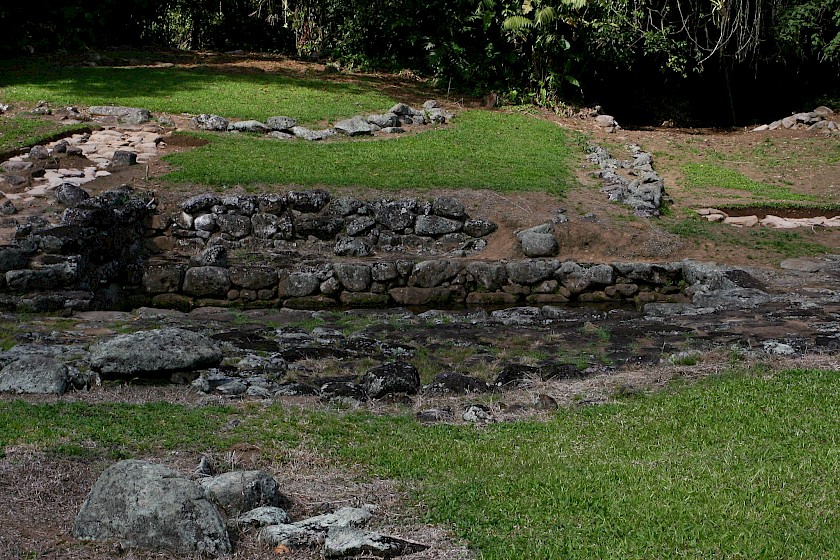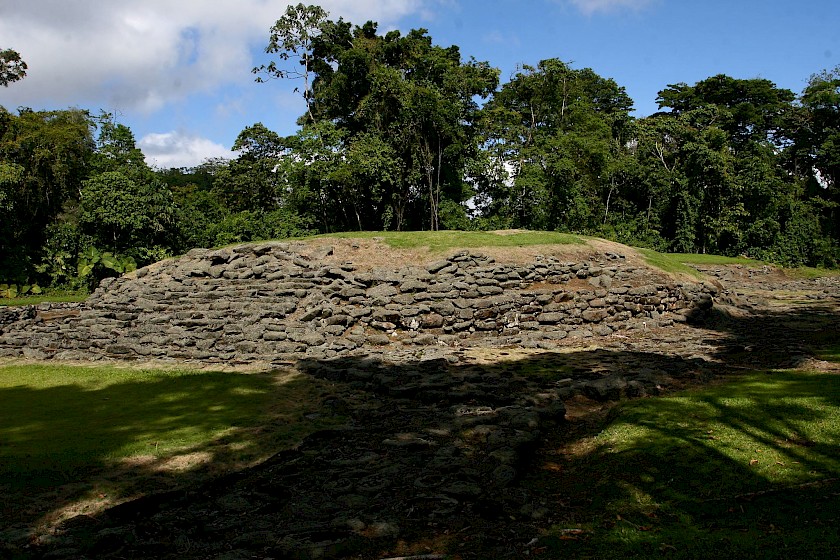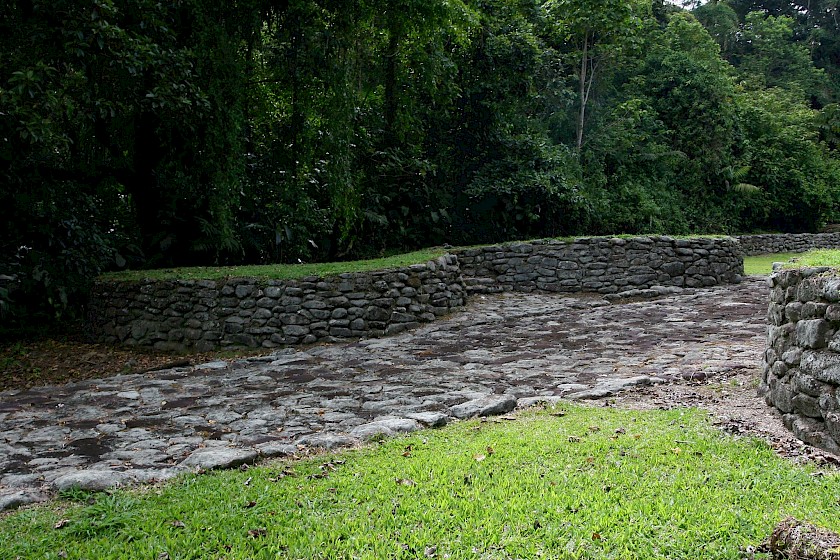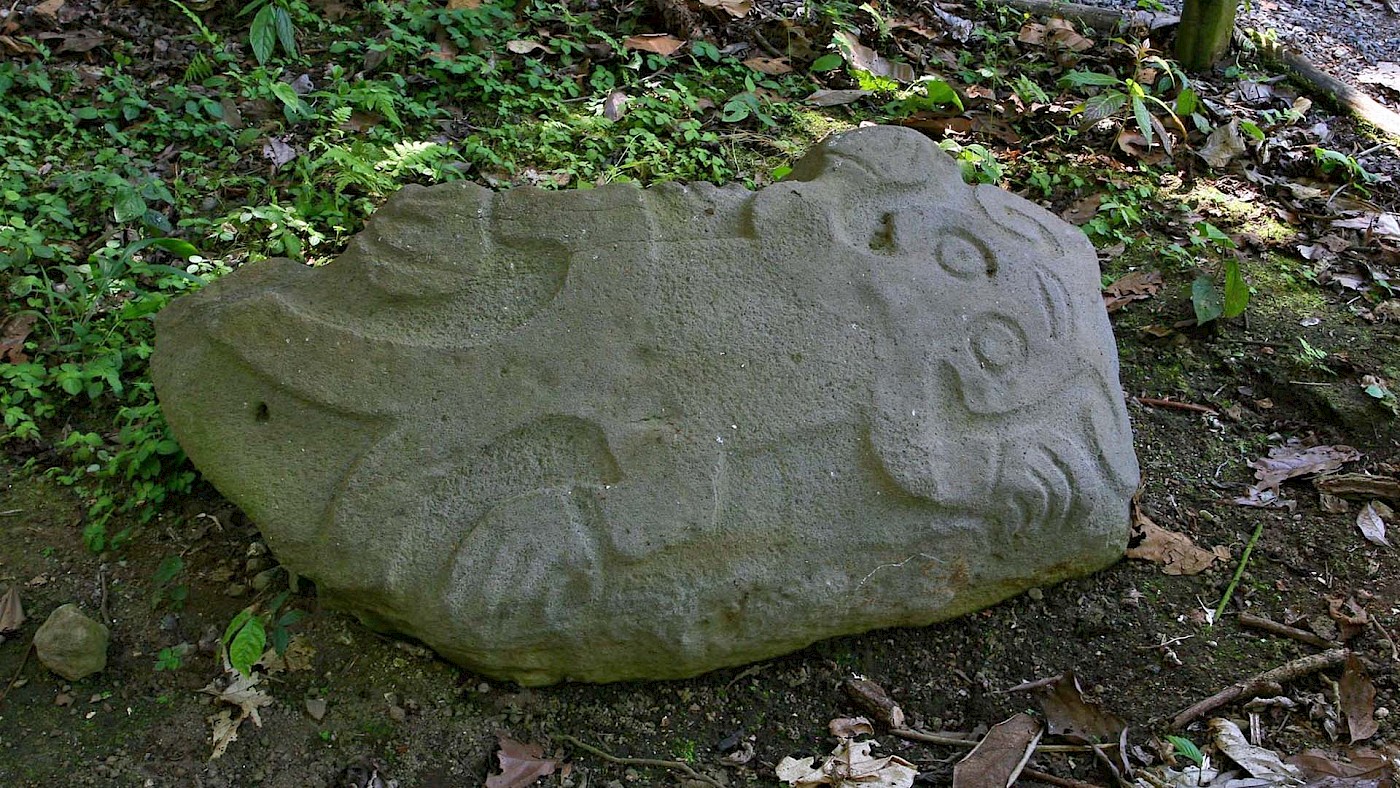To modern scholars, Guayabo de Turrialba is the most significant site in Costa Rica, and to locals it is of considerable cultural value. For these reasons, it is protected inside a Monumento Nacional (National Monument), which is staffed by watchful stewards.
A visit to Guayabo is well worth it if you are in Costa Rica, although be warned that the artefacts that have been excavated here reside not at the archaeological park, but in the Museo Nacional de Costa Rica in San José.
Exploring Guayabo
Guayabo was inhabited from about 1000 BC until about AD 1400. As with so many historic cities throughout the world, only a portion of the inhabited area has been excavated. The areas that have been dug, however, are striking. When taking the walking tour, you will first encounter the aqueduct.
Many of us – I know this is true for myself – think of the cultures of the ancient Mediterranean when we think of early water systems, but the civilization that flourished in Guayabo mastered this important variety of engineering. The hydrological system included infrastructure to direct fresh water into the settlement and store it, as well as a system of drainage to prevent flooding. Thanks, in large part, to this aspect of the site, the American Society of Civil Engineers in 2009 declared Guayabo as an International Historic Civil Engineering Landmark (as per the ASCE website).

The structures that made up the settlement based in Guayabo consisted of wooden construction built upon raised platforms of stone. The most striking part of the site today contains a number of these foundations, amongst which is the “Main Mound” or “Central Mound”.
Measuring 28m in diameter and 2.76m tall, even without the wooden superstructure it is an imposing piece of architecture (size taken from J.E. Garnier Zamora and E. Troyo Vargas, “El uso del espacio y la arquitectura del sitio,” in: E. Troyo Vargas (ed.), Guayabo de Turrialba: Una aldea prehispánica compleja, p. 66). It was clearly the central focus of this part of the settlement during the period it was in use. It is surrounded by a paved road, which follows its form, and to the “front” is a large rectilinear plaza.

Much of what is visible at the site now, including the Central Mound, was built during the La Cabaña Phase (ca. AD 800–1300). This was a period of intense monumentalization of Guayabo as well as unification of the social groups in the region. Guayabo seems to have been a locus of social power in the wake of this período de integración.
The Central Mound functioned as the centre of this. To its front ran a paved road which connected the surrounding settlements, with the roads running as far as 9km. At the point that a traveller would first see the Central Mound, they would be forced to walk up a shallow staircase. From here, the superstructure of the building would come into view against the dramatic backdrop of a steep jungle valley. A sense of awe certainly would have overwhelmed those who were coming here for the first time.

After ascending the stairs, visitors were then greeted by a matching pair of structures, rectangular in shape. These were probably guardhouses that flank the road at this point and would have controlled access to the settlement.
Continuing in, two structures, “figure-eight” in shape, are found on each side of the now much more narrow road leading into the plaza in front of the Central Mound. These may have been used as further security buildings, or perhaps storehouses or ritual buildings.
There is, unfortunately, no evidence for their exact purpose. Interestingly, they are unique in Costa Rica. The exotic nature of these structures was deliberate and, if they did not have a cult significance, were probably meant to communicate that Guayabo was a unique settlement, the seat of power.

The use of space around the Central Mound was deliberate and sophisticated. It reinforced the authority of the chief, king, or magistrate who controlled Guayabo. Architecturally, the main building probably served as both a symbol as well as a place to conduct public business. The exact nature of the authority to be found here is unclear, with at least one author describing the settlement as the Centro administrativo-ceremonial for the region: administrative or ceremonial (R. Tenorio Jiménez, “Monumento Nacional Guayabo, pasado precolombino de Costa Rica”, p. 7). There is no reason to think that it could not have acted as both.
The Central Mound and its complex concealed a number of water holding tanks from the approaching road, as well as other areas of the settlement. This could indicate the presence of a water or bathing cult. If this was the case, this complex would have allowed the ruler to restrict access to religious practise and as a foundation to their authority.
Closing remarks
Guayabo de Turrialba is an archaeologically intriguing site. It is culturally important for Costa Rica, but also is important for those interested in comparative study of archaeologically attested cultures.
Here, we are able to study the use of space in a primary centre that, unlike in many parts of Europe, has not experienced continual habitation through to the contemporary period. Not only did its inhabitants use the constructed environment to enhance the prestige and express the power of the settlement’s chief, but took advantage of the natural environment to create a dramatic atmosphere. They were also able to combine human engineering and the nature of the site to control access to an important, perhaps sacred, resource, water.
Anyone who is travelling to Costa Rica should visit the Monumento Nacional de Guayabo, despite it being a bit of a drive from many of the major tourist areas. For readers who are interested in the use of space in early socially complex societies, it is a must see and must study.
